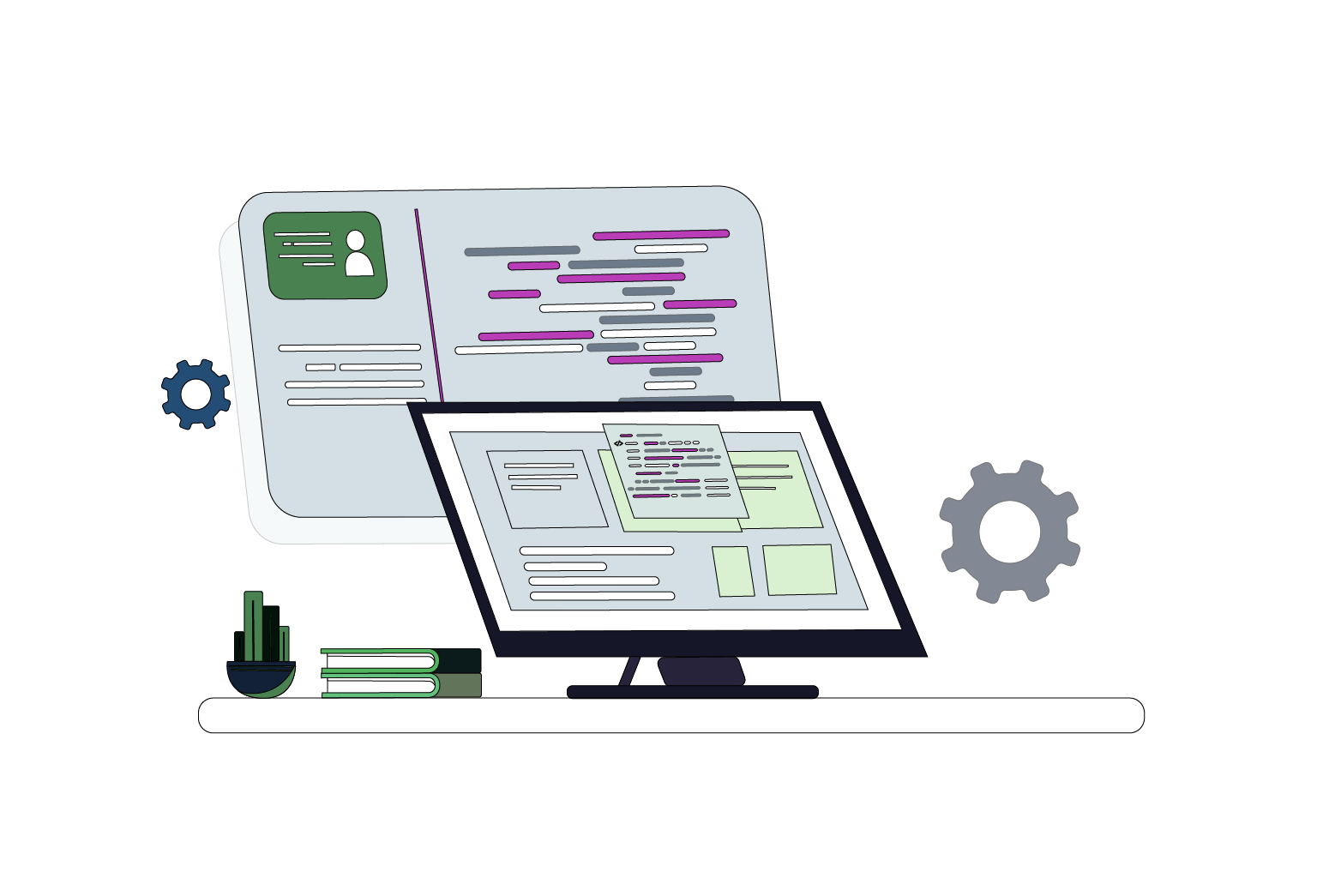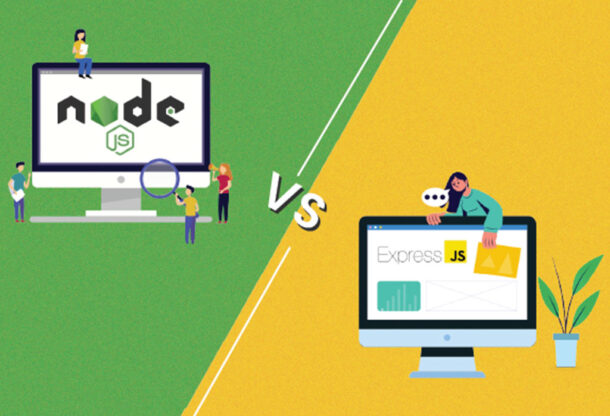Node Js and MongoDB Leading the Charge in Dynamic Web Development
Enterprise applications that are versatile and reliable are sought after. In this world, being versatile, quick to react, and having real-time skills are fundamental for progress. That is the very job of Node js and MongoDB, an intense mix of a JavaScript runtime environment and a NoSQL database. However, why are state-of-the-art applications built utilizing these tech stacks? These technologies empower organizations to stretch the boundaries of what’s feasible in terms of data management, real-time processing, and application scalability. They are more than just tools.

Node js and MongoDB together have turned into powerful tools for making versatile, compelling online applications. From using asynchronous programming to boost performance to handling JSON data effortlessly, this cooperative energy enjoys many benefits. This article investigates the reasons why Node js and MongoDB function admirably together in the field of web development, contrasting it with other solutions and stressing the exceptional advantages that this combination offers. We want to provide you with a thorough understanding of the progressive potential that these innovations present, especially concerning how to use MongoDB in Node.js for enterprise applications. Let’s get everything rolling.
The Enchanting Fusion of Node js and MongoDB for Data Manipulation and Storage Efficiency
Many contemporary software apps are based on the phenomenal blend of Node.js, an open-source JavaScript runtime environment, and MongoDB, a NoSQL database. Using MongoDB in Node js gives remarkable execution, constancy, and versatility, which makes them a top choice for developers and organizations. The NoSQL architecture of MongoDB, which empowers flexible data storage and retrieval in a JSON-like format, is its main strength. Projects that require fast data management and change can profit from it. Organizations can ensure their frameworks are adaptable and versatile to changing necessities by using MongoDB.
On the other hand, Node.js shines due to its non-blocking, event-driven architecture. Its architecture is quick and appropriate for handling several connections at once. Data delivery is made quick and productive for real-time applications and services with Node.js. When joined, MongoDB and Node.js give a high-performance, developer-friendly stack for making contemporary web applications, RESTful APIs, and microservices.
Since JavaScript is utilized by both the server and the database, development is made easier and there is less need to switch between different languages or tools. Scaling applications, offering dependable Node.js development services, and acknowledging inventive thoughts are clear benefits of this combination. E-commerce sites and real-time collaboration tools are only two examples of how adaptable and versatile Node js with mongoDB are.
Conquering Data Challenges with Asynchronous Mastery for Scalability Triumphs
The native support for JSON (JavaScript Object Notation) given by Node js and MongoDB is one of the fundamental benefits of consolidating the two technologies. JavaScript and JSON are utilized by both Node.js and MongoDB, bringing about a cohesive development environment. Thus, data manipulation and transfer between the client side and server side can be achieved easily by developers, saving time and minimizing errors by eliminating the need to convert or reformat data. The asynchronous features of MongoDB and Node.js simplify it to scale applications to oblige expanding traffic volumes. By upgrading application throughput and optimizing resource usage, developers can ensure a responsive client experience even during peak usage.

Data is stored in a versatile JSON-like format called BSON (Binary JSON) by MongoDB. This makes it conceivable to make and oversee code effectively by empowering a more powerful and schema-less data model that intently looks like the JavaScript objects found in Node.js applications. Due to its event-driven architecture, Node.js can deal with a few connections at once without having to wait for tasks to finish. MongoDB’s asynchronous drivers, which provide successful database interactions by Node.js’ non-blocking architecture, complement this.
Utilizing Node js and mongoDB is an incredible method for executing a microservices architecture. The adaptability and adaptability of the application are additionally expanded by this architectural style, which empowers the development of independent, modular components that can be deployed and scaled independently. By distributing data across several machines, MongoDB provides built-in support for horizontal scaling through sharding, making it viable for dealing with huge datasets and high traffic volumes. Combined with Node.js, which develops with client interest and is asynchronous and event-driven by nature, developers can make extremely versatile applications.
Transmuting Your Application’s Digital Elements into Precious MongoDB Connections for Ultimate Functionality
Getting your Node.js application connected to MongoDB is fundamental to understanding the full advantages of high-volume, real-time data processing and operations. To oversee associations proficiently, this interaction involves safely configuring your connection’s URL, username, and password as well as appreciating the possibility of connection pooling. You’ll utilize the MongoDB Node.js driver to start a connection between your Node.js application and MongoDB.
This driver makes it easier for you to speak with the database and empowers it to complete various tasks like inserting, updating, deleting, and querying data. Adding the MongoDB client to your application is the initial step. This client fills in as a course between the MongoDB database and your Node.js code.
The Uniform Resource Identifier (URI) for a MongoDB connection is a string that contains the database connection parameters. It contains details like the database name, server address, and protocol (mongodb or mongodb+srv for Atlas). The username and password are data contained in the URI in case authentication is needed. To protect your information and ensure that main approved clients can get to the database, it is essential to get your database connection details.
As opposed to hard-coding passwords, usernames, and data set URIs into your application, store sensitive information in environment variables. This strategy expands security and builds the adaptability of your application by adjusting these details without changing the code. With the MongoDB Node.js driver, you can include options in your connection process and connect Node to MongoDB easily.
Pushing the Envelope with Node.js & MongoDB for Dynamic Web Application Excellence
Following recommended practices is fundamental as you develop Node js and MongoDB applications to create safe, effective, and scalable systems. This step explores advanced topics that can additionally refine your development approach, as well as significant contemplations for working on the security and performance of your applications. Web application security includes more than just protecting data; it also includes putting strong authentication systems in place.

Utilize MongoDB’s role-based access control (RBAC) feature to restrict user access to data according to their role. To bring down the opportunity of unauthorized data exposure, ensure clients can get to the data expected for their job. Use libraries, for example, Passport.js to manage user authentication for Node.js applications.
Before storing passwords, ensure they are securely hashed utilizing algorithms like bcrypt. To store sensitive data, for example, your MongoDB connection string, use environment variables rather than hard-coding them into your application files. Ensure that TLS/SSL is being utilized to encode connections to your database. Achieving optimal performance from your Node js and MongoDB coordination requires adjustments at both the database and application levels.
In MongoDB, proper indexing is fundamental to upgrading query performance. Ensure that indexes are made for fields that are frequently queried by examining your query patterns. Keep index overhead in mind and strike a balance between increasing query performance and the extra storage and upkeep that come with indexes. To successfully oversee database connections, utilize MongoDB’s connection pooling feature. Since Node.js applications are asynchronous and can bring about a large number of concurrent database operations, this is especially crucial.
Collaborate with Pattem Digital for Node js and MongoDB-driven Dynamic Web Innovation
Developing Node.js web applications with MongoDB as the driving force of choice, our organization is awesome at transforming web development into an art. We make dynamic, enamoring, and engaging web by our dominance of Node js web application development services, and data-driven experiences are engaged by MongoDB’s adaptability.
Utilizing the maximum capacity of these technologies, our team organizes a smooth journey from conception to deployment. We rejuvenate thoughts utilizing agile processes and meticulous attention to detail, creating feature-rich, reliable apps that completely change the digital landscape. You can depend on us to work together to develop the next wave of dynamic web applications that will reclassify the Node.js and MongoDB ecosystem’s quality standards.





